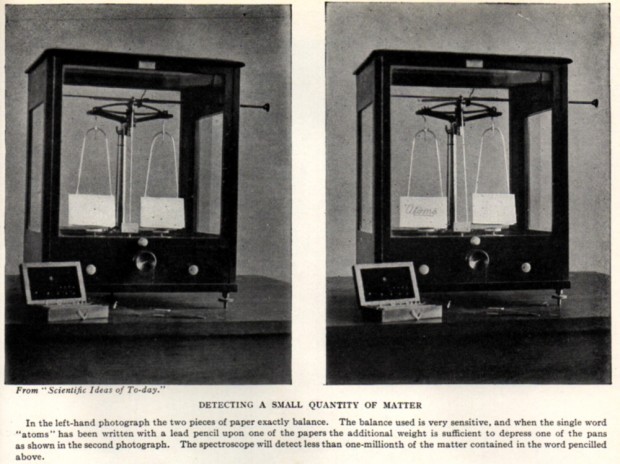Inventions
Horse Odometer

From Munsey's Magazine, 1895. (via Paul Collins)
Posted By: Alex - Tue Feb 05, 2013 -
Comments (9)
Category: Inventions, Travel, Nineteenth Century
The Anti-Collision Train
Imagine you're riding in a train, when you see another train hurtling toward you on the same track. No problem. You're on the "anti-collision train," designed by P.K. Stern of New York. It was a bold idea for improving travel safety, but it never caught on. The Strand magazine (1904) explained the concept:The cars, although they run upon wheels, are really travelling bridges, with overhanging compartments for the accommodation of passengers. Over the framed structure of the cars thus constituted an arched track is carried, securely fastened to the car and serving the purpose of providing a road-bed for the colliding car. This superimposed track is built in accordance with well-understood principles of bridge construction.

Posted By: Alex - Fri Feb 01, 2013 -
Comments (9)
Category: Inventions, Travel, Transportation, Trains
CowCows
Your challenge is to guess whether this product is real or imaginary. The answer is below in extended.Product Description: CowCows (aka VACHEMENT VACHE). Created by designer Cyprien Côté.

More in extended >>
Posted By: Alex - Sun Jan 27, 2013 -
Comments (2)
Category: Inventions, Cows
Slow Down—You Move Too Fast Decelerator Helmet
With the Decelerator Helmet, you can slow time down to enjoy the view.The Decelerator Helmet - A slow motion for Real Life from Lorenz Potthast on Vimeo.
Look at the slo-mo and stop-motion skateboard example at around 2:30.
The description of how the technology works is also cool.
It makes me wonder if someone wearing the helmet would bump into people if they weren't in real-time. In the video, the subject walks through the crowd but the video is delayed.
As I bump my way through this crowded world, I may be wearing one of these and not know it.
Posted By: gdanea - Fri Dec 07, 2012 -
Comments (4)
Category: Inventions
The EyeSee Mannequin
It's the newest innovation in mannequin technology. It watches customers with the camera installed in its eye, recording details such as age, race, and gender. It also keeps an eye out for shoplifters. Be cool to have one of these as a home security camera. Keep it standing in the window, watching everyone who walks up to the door. [Yahoo! News]
Posted By: Alex - Sat Nov 24, 2012 -
Comments (4)
Category: Inventions, Robots, Technology
The Weight of Handwriting
Click to enlarge. From The Outline of Science, 1922. One of these would be useful for determining exactly how much weight you gained over Thanksgiving.
Posted By: Alex - Fri Nov 23, 2012 -
Comments (5)
Category: Inventions, Science, 1920s
DIY Railroading
Posted By: Paul - Thu Nov 08, 2012 -
Comments (7)
Category: Hobbies and DIY, Inebriation and Intoxicants, Inventions, Technology, Wild West and US Frontier, Transportation
No Place Like Dumpster
Posted By: Paul - Thu Oct 11, 2012 -
Comments (4)
Category: Domestic, Eccentrics, Inventions
The Sport-Briar Pipe



"Is that an Indian Club between your lips, or are you just glad to be smoking?"
No wonder this never caught on.
Posted By: Paul - Mon Oct 01, 2012 -
Comments (3)
Category: Inventions, Chindogu, Smoking and Tobacco, 1920s
The Chest Pencil

This is an unusual object on display at the London Science Museum, which offers this explanation:
Posted By: Alex - Fri Sep 21, 2012 -
Comments (8)
Category: Inventions

| Who We Are |
|---|
| Alex Boese Alex is the creator and curator of the Museum of Hoaxes. He's also the author of various weird, non-fiction, science-themed books such as Elephants on Acid and Psychedelic Apes. Paul Di Filippo Paul has been paid to put weird ideas into fictional form for over thirty years, in his career as a noted science fiction writer. He has recently begun blogging on many curious topics with three fellow writers at The Inferior 4+1. Contact Us |





